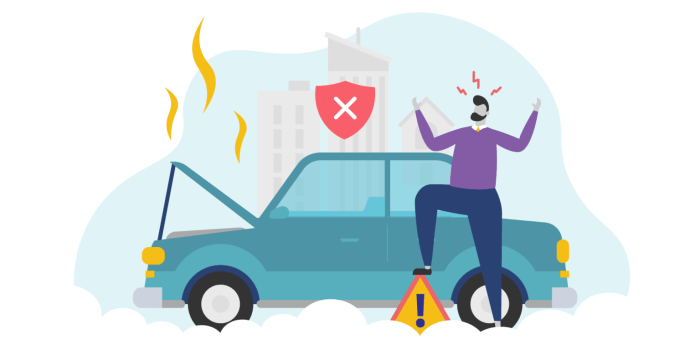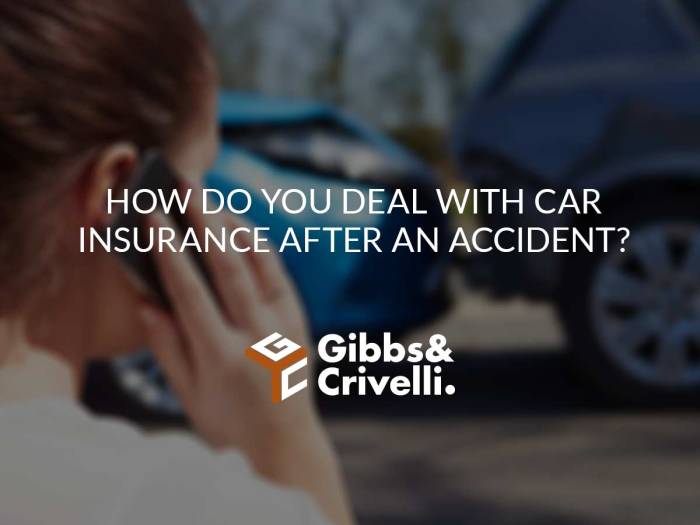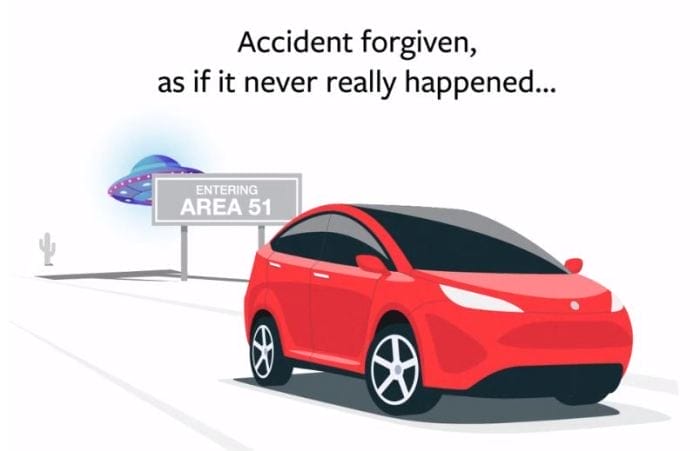In the realm of insurance, understanding the intricacies of accident forgiveness can be a game-changer, especially in a state like California. This comprehensive guide delves into the world of insurance tips, tricks, and accident forgiveness, providing valuable insights to help drivers navigate the complexities of auto insurance.
From grasping the fundamentals of auto insurance coverage to comprehending the significance of accident forgiveness, this guide equips readers with the knowledge to make informed decisions when selecting an insurance provider and filing claims. Dive into the world of insurance wisdom and unlock the secrets to securing the best coverage while safeguarding your financial well-being.
Insurance Basics in California

Understanding auto insurance coverage is essential for California drivers. This article aims to clarify the basics of auto insurance in California, including different policy types and common insurance terms.
California’s auto insurance system is a combination of mandatory and optional coverage. The state requires drivers to carry a minimum amount of liability insurance, which covers bodily injury and property damage caused to others in an accident. Additional coverage options include collision, comprehensive, and property damage.
Types of Auto Insurance Policies
There are three main types of auto insurance policies in California:
1. Liability Coverage: This is the minimum required coverage in California. It covers bodily injury and property damage caused to others in an accident, but it does not cover damage to your own vehicle.
2. Comprehensive Coverage: This coverage helps pay for damage to your own vehicle, regardless of who is at fault in an accident. It also covers damage caused by theft, vandalism, and natural disasters.
3. Property Damage Coverage: This coverage pays for damage to another person’s property in an accident, such as their car or home.
Common Insurance Terms
Here are some common insurance terms that you should be familiar with:
1. Premium: This is the amount you pay for your insurance coverage.
2. Policy Limit: This is the maximum amount your insurance company will pay for a claim.
3. Copay: This is the amount you have to pay out of your pocket before your insurance coverage kicks in.
4. Endorsement: This is an addition to your policy that provides extra coverage for specific risks, such as roadside assistance or towing.
Understanding Accident Forgiveness

Accident forgiveness is a valuable provision offered by some insurance companies in California that protects policyholders from premium increases resulting from a single at-fault accident. In California, where car insurance rates are among the highest in the nation, accident forgiveness can provide significant financial relief and peace of mind.
How Accident Forgiveness Works
When a policyholder with accident forgiveness coverage files an at-fault accident claim, the insurance company will typically waive the surcharge that would otherwise be added to their premium. This means that the policyholder’s premium will not increase as a result of the accident, even if they have been accident-free for several years.
Benefits of Accident Forgiveness
Accident forgiveness can provide several benefits to California drivers, including:
- Protection from Premium Increases: Accident forgiveness prevents the policyholder’s premium from increasing after an at-fault accident, even if they have been accident-free for a long period.
- Peace of Mind: Accident forgiveness provides peace of mind knowing that a single mistake will not lead to a significant increase in insurance premiums.
- Affordability: Accident forgiveness can make car insurance more affordable for drivers who are concerned about the financial impact of an at-fault accident.
Real-Life Scenarios
To illustrate the benefits of accident forgiveness, consider the following real-life scenarios:
- Scenario 1: A driver with accident forgiveness coverage is involved in an at-fault accident. Without accident forgiveness, their premium would increase by $500 per year. However, because they have accident forgiveness, their premium remains the same.
- Scenario 2: A driver without accident forgiveness coverage is involved in an at-fault accident. Their premium increases by $500 per year. This increase in premium can make it difficult for the driver to afford car insurance, potentially leading to a lapse in coverage.
Accident forgiveness can be a valuable addition to a California car insurance policy. It can provide protection from premium increases, peace of mind, and affordability.
Eligibility Criteria for Accident Forgiveness

In California, the eligibility requirements for accident forgiveness vary among insurance companies. However, some general conditions and restrictions commonly apply:
Minimum Policy Duration
Typically, you must have maintained the insurance policy with the same company for a specific period, often ranging from three to five years, before becoming eligible for accident forgiveness.
Accident-Free Driving Record
To qualify for accident forgiveness, you must have a clean driving record, free of at least three to five years (depending on the insurance company’s policy) of at-fault accidents, traffic violations, or major moving violations.
Policy Type and Coverage Limits
Accident forgiveness may be limited to certain types of insurance policies, such as comprehensive or collision coverage. Additionally, it may only apply to specific coverage limits or deductibles.
First-Time Accident
In most cases, accident forgiveness is applicable only to the first at-fault accident during the policy period. Subsequent at-fault accidents may not be eligible for forgiveness.
Examples of Applicable and Non-Applicable Scenarios
- Applicable: A driver with a clean driving record for five years, who has maintained the same insurance policy for four years, gets into their first at-fault accident. The insurance company may apply accident forgiveness, preventing the accident from affecting their insurance rates.
- Non-Applicable: A driver with a history of at-fault accidents within the past three years, despite maintaining the same insurance policy for five years, gets into another at-fault accident. In this case, accident forgiveness may not be applicable due to the driver’s previous at-fault accidents.
Impact of Accident Forgiveness on Insurance Premiums

In California, accident forgiveness can significantly influence insurance premiums. Understanding how it affects your rates can help you make informed decisions about your coverage. Here’s a detailed analysis of the premium impact and comparisons with other factors.
Premium Savings and Increases
Accident forgiveness typically offers premium savings for drivers who have maintained a clean driving record. The exact amount of savings can vary depending on the insurance company, your policy details, and your driving history. On average, drivers with accident forgiveness may see a 5-10% discount on their premiums.
However, if you have multiple accidents or violations on your record, accident forgiveness may not result in significant savings or could potentially lead to higher premiums.
Comparison with Other Factors
While accident forgiveness can impact premiums, it’s essential to consider other factors that play a more significant role in determining your rates. These include:
- Age: Younger drivers generally pay higher premiums due to their perceived higher risk.
- Driving Record: A history of accidents, tickets, or violations can result in higher premiums.
- Vehicle Type: Sports cars, luxury vehicles, and high-performance vehicles often come with higher insurance rates.
- Coverage Level: Choosing higher coverage limits and additional endorsements can increase your premiums.
- Location: Insurance rates can vary based on geographic factors such as crime rates and accident frequency.
Accident forgiveness should be considered in conjunction with these factors to assess its overall impact on your insurance premiums.
Choosing an Insurance Provider with Accident Forgiveness
Intro paragraphWhen selecting an insurance provider that offers accident forgiveness in California, it’s crucial to consider specific factors to ensure you make an informed decision. By understanding the key aspects to evaluate and comparing quotes from multiple providers, you can choose an insurance company that aligns with your needs and provides the best possible rates.
Factors to Consider
- Reputation and Financial Stability: Research the insurance provider’s reputation, financial stability, and customer satisfaction ratings. Choose a company with a strong track record of providing reliable insurance services and handling claims promptly.
- Coverage Options: Review the specific coverage options offered by the insurance provider. Ensure that the accident forgiveness coverage meets your requirements and provides adequate protection for your vehicle and liability.
- Accident Forgiveness Terms and Conditions: Understand the terms and conditions associated with the accident forgiveness coverage. This includes eligibility criteria, any limitations or exclusions, and the specific process for submitting a claim under accident forgiveness.
- Customer Service and Support: Consider the insurance provider’s customer service and support. Look for a company with a responsive and helpful customer service team that is available to answer your questions and assist you with your insurance needs.
Importance of Comparing Quotes
- Save Money: Comparing quotes from multiple insurance providers allows you to compare insurance rates and coverage options. This enables you to find the best possible insurance deal that meets your budget and coverage requirements.
- Evaluate Coverage Options: By comparing quotes, you can assess the different coverage options available from various insurance providers. This helps you choose the coverage that best suits your needs and ensures you have adequate protection.
- Negotiate Better Rates: When you have quotes from multiple insurance providers, you can use them to negotiate better rates. Insurance companies are often willing to offer discounts or concessions to secure your business.
Tips for Negotiating Insurance Rates
- Be Prepared: Gather all necessary information, including your driving history, vehicle details, and any previous insurance policies. This will help you provide accurate information when requesting quotes.
- Ask for Discounts: Inquire about available discounts, such as multi-car discounts, good driver discounts, or discounts for installing safety features in your vehicle.
- Consider Bundling Policies: If you have multiple insurance policies, such as home and auto insurance, consider bundling them with the same insurance provider. This can often lead to lower rates.
- Negotiate: Don’t be afraid to negotiate with the insurance provider. Let them know you’re comparing quotes and see if they’re willing to offer a better rate to secure your business.
Filing a Claim with Accident Forgiveness

Filing an insurance claim with accident forgiveness in California is a straightforward process, designed to provide convenience and protection to policyholders. Here’s a detailed guide on the steps involved, along with the required documentation and specific procedures:
1. Contact Your Insurance Company
- As soon as possible after the accident, contact your insurance provider through their designated hotline or online portal.
- Be prepared to provide basic information about the accident, including the date, time, and location, as well as details about the vehicles involved and any injuries sustained.
2. Gather Necessary Documentation
Compile relevant documentation to support your claim. This may include
– A copy of the police report, if one was filed. – Photographs of the accident scene and damage to the vehicles involved. – Contact information and insurance details of the other driver(s) involved. – Medical records and bills related to any injuries sustained in the accident.
– Estimates or receipts for repairs to your vehicle.
3. Complete and Submit the Claim Form
- Obtain the necessary claim form from your insurance company. This form typically requires information about the accident, the vehicles involved, and the policyholder’s personal and insurance details.
- Fill out the claim form accurately and completely, providing all the requested information.
- Attach the required documentation to the claim form and submit it to your insurance company through their preferred method, whether online, by mail, or in person.
4. Cooperate with the Claims Process
- Your insurance company may assign an adjuster to handle your claim. Cooperate with the adjuster’s requests for additional information or documentation.
- Be prepared to provide a statement about the accident and answer any questions the adjuster may have.
- Attend any scheduled inspections or assessments related to the claim, such as vehicle inspections or medical examinations.
5. Review the Claim Settlement Offer
- Once the insurance company has completed its investigation, it will issue a claim settlement offer. This offer will typically include compensation for the damages to your vehicle, any medical expenses, and other covered losses.
- Carefully review the settlement offer to ensure it accurately reflects the extent of your losses and meets your expectations. If you have any questions or concerns, discuss them with your insurance company.
6. Accept or Negotiate the Settlement Offer
- If you agree with the settlement offer, accept it in writing. This will finalize your claim and the insurance company will release the payment to you.
- If you believe the settlement offer is insufficient, you can negotiate with the insurance company to reach a more favorable settlement. This negotiation process may involve providing additional documentation or evidence to support your claim.
Common Misconceptions about Accident Forgiveness

Accident forgiveness is a valuable coverage option that can protect drivers from premium increases after an at-fault accident. However, there are several common misconceptions surrounding accident forgiveness in California that can lead to misunderstandings and incorrect assumptions.
This section aims to clarify these misconceptions and provide a clear understanding of accident forgiveness, its eligibility, benefits, and limitations.
Misconception 1: Accident Forgiveness Applies to All Accidents
Many drivers mistakenly believe that accident forgiveness covers all types of accidents, regardless of fault. However, accident forgiveness typically only applies to at-fault accidents where the insured driver is responsible for causing the collision.
Non-at-fault accidents, such as those caused by another driver’s negligence, are not covered by accident forgiveness. In these cases, the at-fault driver’s insurance policy will be responsible for covering the damages.
Misconception 2: Accident Forgiveness Automatically Resets After a Certain Period
Another common misconception is that accident forgiveness automatically resets after a certain period, such as one year or three years. This is not always the case.
The terms and conditions of accident forgiveness vary among insurance providers. Some insurers may offer a one-time accident forgiveness benefit that applies to the first at-fault accident, while others may have a waiting period before the coverage resets.
It’s important to carefully review the terms of your insurance policy to understand the specific conditions of your accident forgiveness coverage.
Misconception 3: Accident Forgiveness Increases Insurance Premiums
Some drivers believe that opting for accident forgiveness will result in higher insurance premiums. However, this is generally not the case.
Accident forgiveness is typically offered as an optional coverage that can be added to your policy for an additional premium. While the cost of accident forgiveness can vary among insurers, it is usually a relatively small amount compared to the potential savings it can provide in the event of an at-fault accident.
Misconception 4: Accident Forgiveness Covers All Types of Insurance Claims
Accident forgiveness typically applies to collision and comprehensive claims, which cover damage to your own vehicle. It does not usually extend to other types of claims, such as liability claims (which cover damages to other people’s property or injuries) or medical payments claims (which cover medical expenses for you and your passengers).
If you are concerned about coverage for other types of claims, you should discuss your options with your insurance provider.
Accident Forgiveness and High-Risk Drivers
For drivers with a history of accidents, maintaining affordable insurance coverage can be a challenge. Fortunately, accident forgiveness is an invaluable feature that can provide significant relief to high-risk drivers in California. Let’s explore the significance of accident forgiveness and how it can help reduce insurance premiums for drivers with poor driving records.
Benefits of Accident Forgiveness for High-Risk Drivers
- Reduced Premiums: By forgiving the first at-fault accident, accident forgiveness programs prevent a sudden spike in insurance premiums, helping high-risk drivers maintain affordable coverage.
- Improved Driving Behavior: The prospect of accident forgiveness can encourage high-risk drivers to be more cautious and attentive on the road, potentially reducing the likelihood of future accidents.
- Peace of Mind: Knowing that a single mistake won’t result in a substantial premium increase can provide peace of mind to high-risk drivers, allowing them to focus on safe driving.
Strategies for High-Risk Drivers to Take Advantage of Accident Forgiveness Programs
- Shop Around for Quotes: Not all insurance providers offer accident forgiveness, and those that do may have varying terms and conditions. Comparing quotes from multiple insurers can help high-risk drivers find the best deal.
- Maintain a Clean Driving Record: While accident forgiveness programs forgive the first at-fault accident, subsequent accidents can still lead to premium increases. Maintaining a clean driving record is crucial for maximizing the benefits of accident forgiveness.
- Consider Usage-Based Insurance: Usage-based insurance (UBI) programs track driving behavior and reward safe drivers with lower premiums. For high-risk drivers who are confident in their improved driving habits, UBI can be a cost-effective option.
Accident Forgiveness and New Drivers

Accident forgiveness is a valuable coverage option for new drivers in California, as it can protect them from high insurance premiums in the event of an accident. New drivers are at a higher risk of accidents due to their lack of experience and unfamiliarity with the roads.
Without accident forgiveness, a single accident can lead to a significant increase in insurance rates, making it difficult for new drivers to afford car insurance.
Finding Affordable Insurance Policies with Accident Forgiveness
There are a few things new drivers can do to find affordable insurance policies with accident forgiveness:
- Shop around for quotes: Compare quotes from multiple insurance companies to find the best rate. Many companies offer accident forgiveness as an optional coverage, so be sure to ask about it when getting quotes.
- Consider usage-based insurance: Usage-based insurance (UBI) policies track your driving habits and reward you with lower rates for safe driving. This can be a good option for new drivers who are confident in their driving abilities.
- Look for discounts: Many insurance companies offer discounts to new drivers who take defensive driving courses or maintain good grades. Ask your insurance company about available discounts.
By following these tips, new drivers can find affordable insurance policies with accident forgiveness that will protect them from high premiums in the event of an accident.
Future Trends in Accident Forgiveness

As the insurance landscape continues to evolve, accident forgiveness programs are likely to undergo changes and developments in the coming years. Several factors, including technological advancements and evolving driving patterns, may shape the future of accident forgiveness in California.
Impact of Technology on Accident Forgiveness
Technological advancements have the potential to significantly influence accident forgiveness programs. Telematics devices, for instance, can provide insurers with detailed data on driving behavior, enabling them to assess risk more accurately. This data could lead to personalized accident forgiveness programs tailored to individual drivers’ habits.
Additionally, the rise of autonomous vehicles may further impact accident forgiveness, as these vehicles are expected to reduce the frequency and severity of accidents.
Changing Driving Patterns and Accident Forgiveness
Changing driving patterns, such as the increasing popularity of ride-sharing services and the growing adoption of electric vehicles, may also impact accident forgiveness programs. Ride-sharing drivers, for example, may face unique risks and could benefit from specialized accident forgiveness coverage.
Similarly, the unique characteristics of electric vehicles, such as their regenerative braking systems, may influence the way insurers assess and forgive accidents.
Evolving Regulatory Landscape
Regulatory changes can also shape the future of accident forgiveness in California. The state’s Department of Insurance has the authority to regulate insurance rates and policies, and any changes in regulations could impact accident forgiveness programs. For instance, stricter regulations on insurance rates could lead to insurers offering more competitive accident forgiveness programs to attract customers.
Conclusion
The future of accident forgiveness in California is likely to be influenced by a combination of technological advancements, changing driving patterns, and evolving regulatory landscapes. As these factors continue to evolve, accident forgiveness programs are likely to adapt and change to meet the needs of drivers and insurers alike.
Final Conclusion
In conclusion, understanding insurance tips, tricks, and accident forgiveness in California empowers drivers with the knowledge to make informed decisions and protect their financial interests. By comprehending the eligibility criteria, potential savings, and common misconceptions, drivers can navigate the insurance landscape with confidence.
Embrace the power of accident forgiveness and unlock the secrets to securing the best coverage while ensuring peace of mind on the road.
Q&A
What are the general eligibility requirements for accident forgiveness in California?
To be eligible for accident forgiveness in California, drivers typically need to have a clean driving record for a specified period, usually three to five years, and meet any additional requirements set by their insurance provider.
How does accident forgiveness impact insurance premiums in California?
Accident forgiveness can potentially lead to lower insurance premiums in California by preventing a single at-fault accident from causing a premium increase. However, the specific impact on premiums can vary depending on factors like the insurance provider, the driver’s history, and the severity of the accident.
What are some common misconceptions about accident forgiveness in California?
A common misconception is that accident forgiveness applies to all accidents, regardless of fault. In reality, accident forgiveness typically only applies to at-fault accidents.



